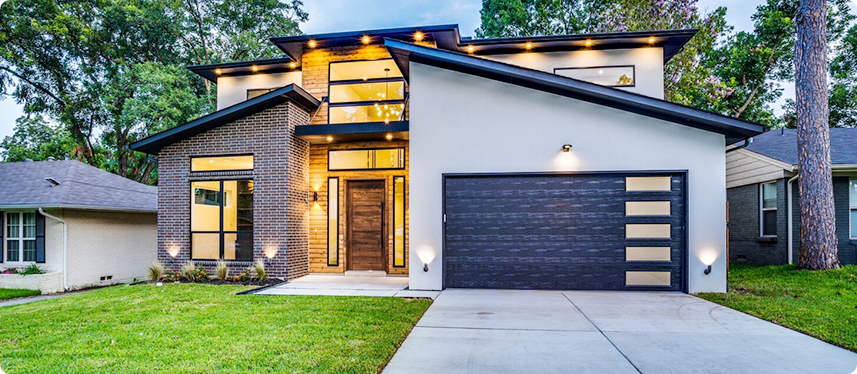

The Story Behind the Writer
John Carter is a seasoned ADU expert with years of experience designing and building custom ADUs. Passionate about creating functional, stylish living spaces, Alex helps homeowners bring their ADU visions to life with expert guidance and quality craftsmanship.
Understanding ADA Requirements for Garage Conversions
The Americans with Disabilities Act (ADA) is a significant piece of legislation enacted in 1990 to ensure equal rights and accessibility for individuals with disabilities. It mandates that public spaces, workplaces, transportation, and housing meet specific accessibility standards to accommodate people with diverse needs.
When planning a garage conversion in the Bay Area, understanding and implementing ADA requirements is vital. Compliance ensures that the converted space is not only functional but also inclusive, allowing people with disabilities to navigate and use the area comfortably. This is particularly important for homeowners aiming to create a universally accessible living environment, whether for personal use or to meet rental requirements.
By integrating ADA standards into your garage conversion, you contribute to a more inclusive community and increase the usability and value of your property.
Key ADA requirements for Garage Conversions
Ensuring accessibility within garage conversions is essential to creating a living space that meets the needs of individuals with disabilities. The ADA outlines specific requirements to facilitate easy navigation and usability. Here are the key ADA requirements for garage conversions:
Common ADA Compliance Mistakes to Avoid in Garage Conversions
Ensuring that your garage conversion meets ADA standards is crucial for creating an accessible and inclusive living space. However, there are common mistakes that can derail your efforts. Here’s a look at some pitfalls to avoid:
Inadequate Doorway Widths
ADA guidelines require doorways to have a minimum clear width of 32 inches to accommodate wheelchairs. Failing to meet this standard can severely limit accessibility and require costly modifications later.
Insufficient Maneuvering Space
Many garage conversions overlook the need for adequate maneuvering space, especially in tight areas like kitchens, hallways, and bathrooms. The ADA requires clear floor space for wheelchairs to make a 180-degree turn, typically a 60-inch diameter. Without proper space planning, you risk creating a layout that is difficult for individuals with mobility aids to navigate.
Improper Slope and Accessible Routes
Accessible routes, both inside and outside the converted space, are often overlooked. Ramps and walkways must have a gentle slope (no steeper than 1:12) to allow easy access. Neglecting this requirement can make it difficult or even impossible for people with disabilities to enter or move around the ADU.
Neglecting Height Requirements for Fixtures and Controls
Another common mistake is placing light switches, thermostats, and other controls too high or too low. The ADA specifies that controls should be installed no higher than 48 inches and no lower than 15 inches from the floor to ensure they are within reach of all users.
Overlooking Accessibility in Bathrooms
If your garage conversion includes a bathroom, it’s critical to follow ADA guidelines for accessible bathrooms. This includes providing sufficient space around toilets, ensuring the proper height of sinks, and installing grab bars. Failure to comply can result in a bathroom that is unsafe and unusable for those with disabilities.
By being aware of these common mistakes, you can avoid costly revisions and ensure your garage conversion is fully ADA-compliant from the start. Taking the time to plan carefully and consult with professionals can make all the difference in creating a functional, accessible, and welcoming space.
Door and Hallway Widths
The ADA mandates that doorways within the converted space must have a minimum clear width of 32 inches when the door is open at 90 degrees. This standard allows individuals using wheelchairs or other mobility aids to pass through without obstruction.
For hallways, the ADA recommends a minimum width of 36 inches to accommodate easy movement. For example, if your garage conversion includes a bedroom and living area, ensure the doors and connecting hallways meet these dimensions.
Practical Example: If your garage conversion includes a door leading to an outdoor patio, it should also adhere to the 32-inch minimum width requirement to ensure that individuals using mobility devices can access outdoor spaces with ease.
Maneuvering Clearances
Maneuvering clearances are critical for providing adequate space for individuals to turn, reach, and navigate within the garage conversion. According to ADA guidelines, a 5-foot by 5-foot clear space is required for a wheelchair to execute a 180-degree turn smoothly.
These clearances should be factored into high-traffic areas such as the kitchen, living room, and entryways.
Practical Example: In a kitchen within the garage conversion, leave at least 48 inches between countertops and appliances to allow a wheelchair user to move comfortably between areas.
Accessible Routes
Accessible routes ensure that individuals with disabilities can travel freely within the converted space. The ADA requires that accessible routes connect all critical areas, such as entrances, bedrooms, bathrooms, kitchens, and common areas. These routes must have a minimum width of 36 inches and be free of any obstacles.
In addition, ramps should be installed where there are changes in floor elevation, with a slope no steeper than 1:12 (for every inch of height, the ramp should be 12 inches long).
Practical Example: If the garage floor is lower than the main house, install a ramp to connect the two spaces, ensuring it adheres to ADA slope requirements for safe and easy access.

Essential Features for ADA-Compliant Garage Conversions
Creating an ADA-compliant garage conversion involves incorporating essential features that promote accessibility and ensure compliance with the Americans with Disabilities Act (ADA). Let’s explore some essential features to consider:
| Ramps and Accessible Entrances | Allow individuals with mobility impairments to enter the living space independently. |
| Grab Bars and Handrails | Promotes stability and assistance for individuals with mobility challenges. |
| Accessible Switches and Outlets | Beneficial for individuals who use wheelchairs or have limited mobility. |
| Proper Placement of Light Switches and Thermostats | They should be located at accessible heights and within reach of individuals using wheelchairs or with limited reach. |
| Accessible Bathrooms | The bathroom should have ample space for maneuvering and clear floor space for easy access. |
| Accessible Kitchens | An ADA-compliant kitchen in the garage conversion should have countertops at a suitable height to accommodate individuals using wheelchairs. |
Maximizing Accessibility in Garage Conversions
In addition to following ADA requirements, here are some best practices further to enhance accessibility in your Bay Area garage conversion:
Consult with Garage Conversion Contractors
Consider seeking guidance from garage conversion contractors who can advise on creating an inclusive living space. They can help identify potential barriers and suggest modifications to ensure universal accessibility.
At ADU Specialist Bay Area, we understand the importance of creating accessible living spaces in garage conversions. Our team of experienced garage conversion contractors ensures garage conversion that meets ADA standards and promotes universal accessibility.
Consider Universal Design Principles
Universal design focuses on creating spaces that are accessible to people of all ages and abilities. Incorporate features such as lever handles, rocker switches, and adjustable countertops to accommodate a wide range of users.
Accessible Parking
If space is available, consider providing accessible parking near the converted garage. Ensure that the parking spot is properly marked and meets the required dimensions.
Communication and Emergency Systems
Install communication and emergency systems accessible to individuals with disabilities. This may include visual fire alarms, accessible doorbells, and phone systems with amplification options.
Professional Services for ADA-Compliant Garage Conversion
Are you looking for expert guidance and assistance with garage conversions project in the Bay Area and ADA requirements? At ADU Specialist Bay Area, we can help you navigate the complexities of garage conversions while ensuring compliance with ADA requirements. Contact us today!
FAQs
Yes, ADA requirements apply if the converted garage serves as a public accommodation or as a residence. Compliance ensures accessibility for individuals with disabilities.
Yes, if you are converting a garage into a living space or a publicly accessible area, ADA compliance is necessary to ensure it meets the accessibility needs of individuals with disabilities.
The property owner or the party managing the conversion is responsible for ensuring ADA compliance. It’s essential to work with local building authorities and professionals familiar with ADA guidelines.
There are limited exemptions, typically related to private residences not intended for public use. However, it’s advisable to consult with a local building authority to understand specific exemptions in the Bay Area.
Ensuring accessibility in Bay Area garage conversions is vital to meet ADA standards, provide inclusive living spaces, and comply with state and federal laws. It also adds long-term value and functionality to your property by accommodating all individuals.